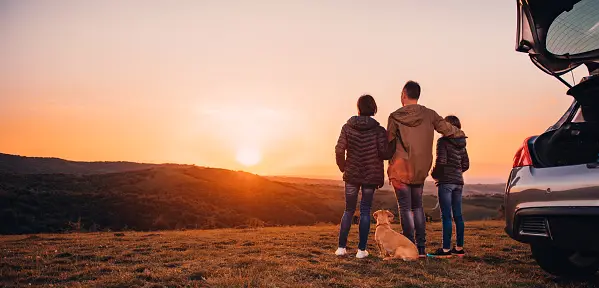5 Survival Skills Every Modern Outdoorsman Should Master

Did you realize that more than 4661 people get lost in the wilderness yearly? Having the key survival skills can be vital when they wind up in unexpected outdoor crises. For those who love the outdoors today, learning these critical skills is not just for fun — it’s essential.
The outdoors offers many benefits. But the wild’s unpredictability demands some readiness. Learning essential survival tactics gives you the know-how and certainty to manage challenging situations, making sure your nature outings stay secure and fun.
5 Survival Skills Every Modern Outdoorsman Should Master
1.Building a Fire

Fire is an essential survival tool. It gives heat, lets you cook, and helps signal for help. You should know how to start a fire. It includes the usual methods (like matches and lighters) and old methods (like rubbing things together or using flint and steel). Being careful with fire and knowing how to make one safely is vital. This keeps accidents from happening and prevents harm to the environment.
Lately, the focus on learning different fire-ignition skills has increased. Standard techniques like using matches and lighters are swift and straightforward, yet they might let you down in stormy weather or if you’re low on supplies. Consequently, more and more people are learning old-fashioned fire-ignition techniques, like flint and steel or a bow drill.
Companies like Bespoke Post and Battlbox have even started offering curated boxes with traditional fire-starting tools and guides, catering to this growing interest in bushcraft skills. Think about the bow drill technique. It uses a wooden stick and a bow to make heat. This heat makes a tiny spark that can light up dry leaves or bark. It’s an excellent way to make fire without matches or lighters.
2.Finding Safe Drinking Water For Survival
A clean, drinkable water is essential for life. Untreated water sources may have harmful germs, so understanding how to make water safe with handy filters, heating it, or homemade methods is critical. Research says contaminated water in natural settings can cause almost 80% of sicknesses out there.
Diseases from water, like giardiasis, cryptosporidiosis, and E. coli, can be pretty serious. These can make people very sick with problems like diarrhea, throwing up, and getting extremely thirsty. More outdoorsmen opt for different ways to make their water safe.
Small, convenient water cleaners like the LifeStraw or Sawyer Squeeze are often a great choice. They’re light, compact, and good at getting rid of bacteria, tiny life forms called protozoa, and sometimes, even viruses. You can use these filters for up to 1,000 gallons of water. It makes them a sure bet for longer trips.
3.Signaling for Help

Getting noticed and calling for aid can save lives during emergencies. Learning skills such as handling a whistle, using a mirror, or creating a signaling fire can boost the likelihood of your rescue.
New research indicates that correctly asking for assistance is a vital survival skill. Distress signals from those lost or injured kickstart over half of all wilderness rescues. However, many outdoor enthusiasts are still unsure how to use these signals effectively.
A loud whistle is one of the handiest and most dependable signals. The sound of a whistle can travel for miles, cutting through thick landscapes. It is suitable for garnering the attention of rescue teams or planes. Nowadays, hikers and outdoor lovers are adding tiny, strong whistles to their essential tools list.
4.Finding Shelter For Survival
Guarding oneself against nature’s elements is critical for staying alive. Knowing how to build emergency shelters with things found in nature or ready-made crises, shelters can offer important insulation and safety.
Pre-made emergency shelters, like space covers or small sleeping bags, are pretty simple to use but can have restrictions in terms of warmth and long-lasting use. Hence, the latest trend among modern outdoor enthusiasts is learning to create resting places using natural materials in the wild.
A lean-to is a very flexible and helpful type of natural shelter. Anyone can build it by making a frame from fallen branches or young trees. Then, they could cover it with stuff that keeps heat in, like leaves, grass, or parts of pine trees.
This way, you have a place to hide from wind, rain, or snow. You can make a lean-to near a natural wall against the wind, like a huge stone or a group of trees. It keeps more heat inside because of this.
5.Basic Navigation For Survival

Knowing where you are and how to return to a safe place is a crucial survival skill. Learning to use a map and compass, plus grasping simple orienteering ideas, can guide you even without new technology.
GPS tools are handy, but they have issues like run-down batteries, lost connection, and glitches. Depending only on GPS might put you at risk if the tool stops working.
That’s the reason why current outdoorspeople are more dedicating themselves to learning old navigational skills with the use of a map and compass. By knowing how to interpret topographic maps, recognize landmarks, and handle a compass for direction, you can securely navigate even when technology lets you down.
Conclusion
Learning these five crucial survival skills can significantly boost your odds of making it through a wilderness scenario, as a modern outdoorsman should master. If you take time before your trip to work on and refine these abilities, you’ll be more ready to face any sudden emergencies. This preparation will let you tackle your wilderness trips with assurance and tranquility.



